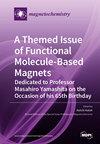LaFe13-x-yMnxSiyH1.6 与共晶液态 GaInSn 合金的兼容性
IF 2.6
4区 化学
Q2 CHEMISTRY, INORGANIC & NUCLEAR
引用次数: 0
摘要
磁致再生器的传热速率是一个广泛研究的课题,这些再生器的可循环性对于高性能系数(例如,可能大于 22,明显高于典型的蒸汽压缩冷却技术)系统的运行至关重要。为了实现高工作频率,从而获得较高的比冷却功率,导热流体应具有较高的热传导率和较低的比热,即较高的热扩散率。共晶金属合金具有这些特性,例如镓-铟-锡(Galinstan),其热扩散系数比水高大约一个数量级。本研究调查了共晶液 Galinstan 暴露对有源磁性再生器装置中 LaFe13-x-yMnxSiyH1.6 磁性粉末相稳定性的影响。使用 X 射线衍射法对暴露于 Galinstan 之前和之后的粉末进行了表征,其中使用 Rietveld 精炼技术和 X 射线荧光法确定了相位。结果发现,在接触 Galinstan 之后,粉末中出现了含氢相,这表明氢从磁致相中流失了。磁致相的降解表明,在有湿气的环境中,粉末与 Galinstan 金属不相容。本文章由计算机程序翻译,如有差异,请以英文原文为准。
Compatibility of LaFe13−x−yMnxSiyH1.6 and Eutectic Liquid GaInSn Alloy
The heat transfer rate of magnetocaloric regenerators is a topic of extensive research and the cyclability of these regenerators is critical to the operation of systems with a high coefficient of performance (e.g., potentially >22, significantly higher than typical vapor compression cooling technologies). To enable a high operating frequency that will result in a high specific cooling power, the heat transfer fluid should have high thermal conductivity and lower specific heat, i.e., higher thermal diffusivity. Eutectic metal alloys possess these qualities, such as gallium–indium–tin (Galinstan), whose thermal diffusivity has been found to be approximately an order of magnitude higher than water. For this study, the effects of eutectic liquid Galinstan exposure on the phase stability of LaFe13−x−yMnxSiyH1.6 magnetocaloric powders in an active magnetic regenerator device were investigated. The powders were characterized before and after exposure to Galinstan using X-ray diffraction, in which the phases were determined using the Rietveld refinement technique and X-ray fluorescence. It was found that after Galinstan exposure, hydrogen containing phases were present in the powder, suggesting that the hydrogen was lost from the magnetocaloric phase. The magnetocaloric phase degradation indicates that the powder was incompatible with the Galinstan metal in an environment with moisture.
求助全文
通过发布文献求助,成功后即可免费获取论文全文。
去求助
来源期刊

Magnetochemistry
Chemistry-Chemistry (miscellaneous)
CiteScore
3.90
自引率
11.10%
发文量
145
审稿时长
11 weeks
期刊介绍:
Magnetochemistry (ISSN 2312-7481) is a unique international, scientific open access journal on molecular magnetism, the relationship between chemical structure and magnetism and magnetic materials. Magnetochemistry publishes research articles, short communications and reviews. Our aim is to encourage scientists to publish their experimental and theoretical results in as much detail as possible. Therefore, there is no restriction on the length of the papers. The full experimental details must be provided so that the results can be reproduced.
 求助内容:
求助内容: 应助结果提醒方式:
应助结果提醒方式:


